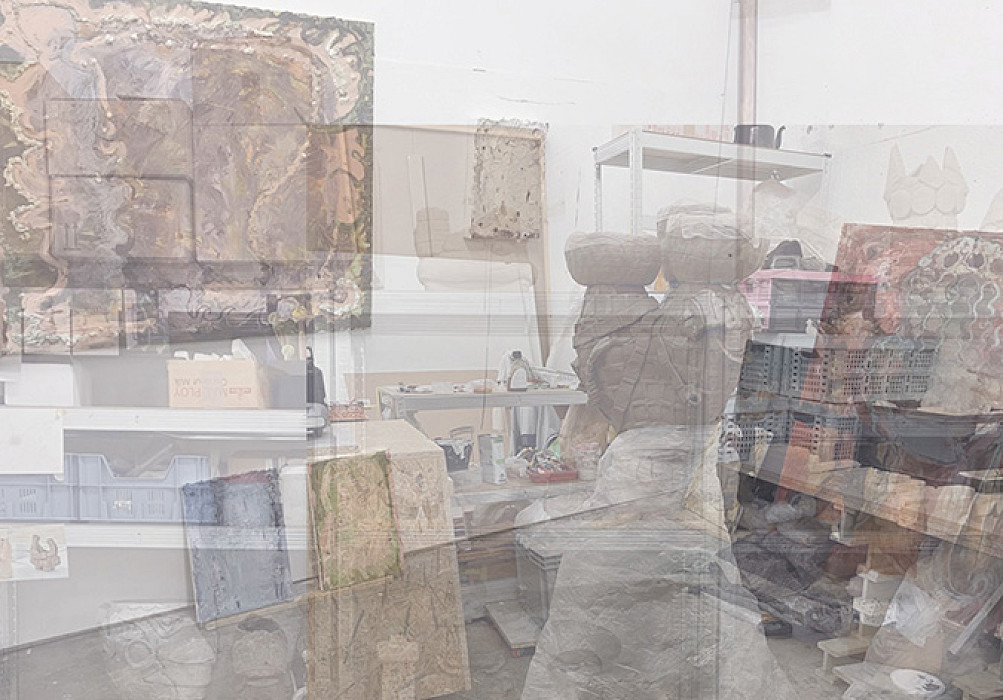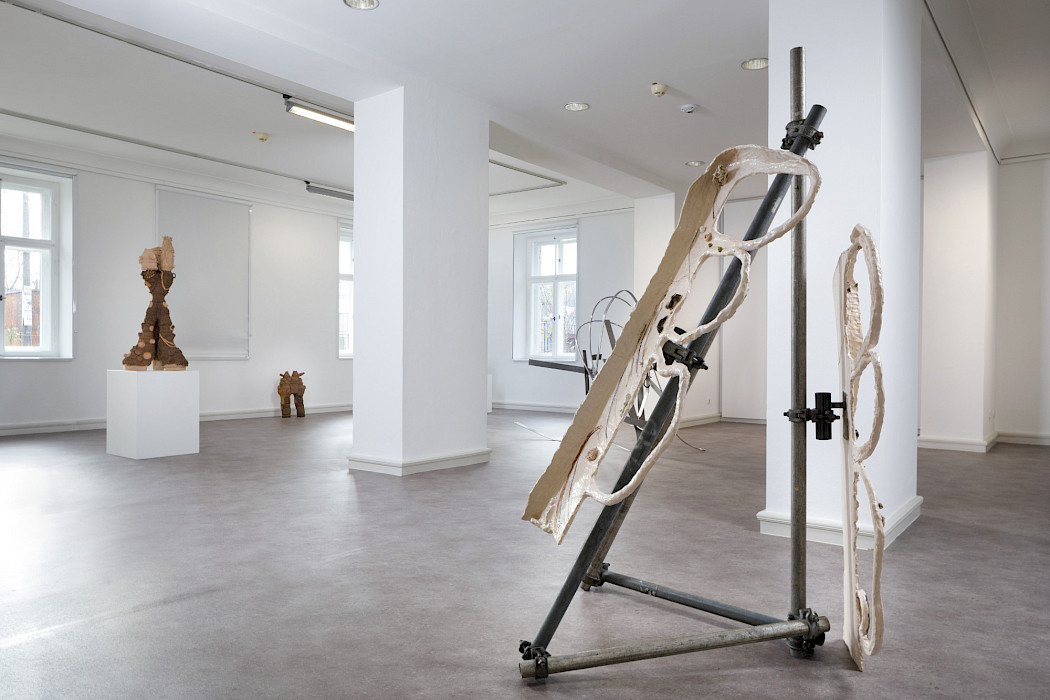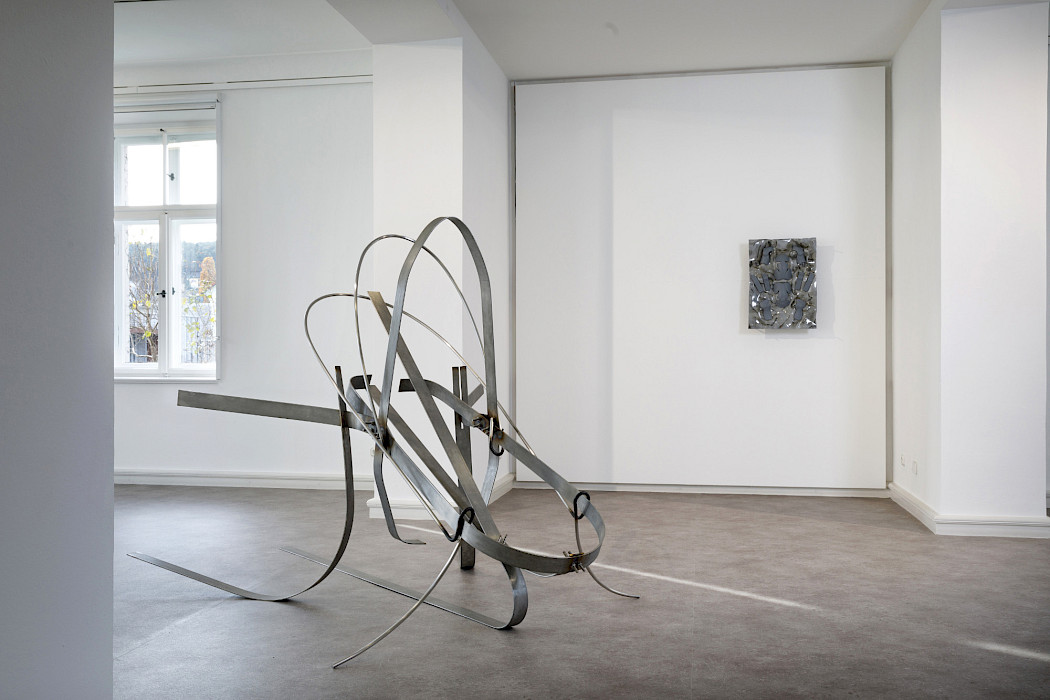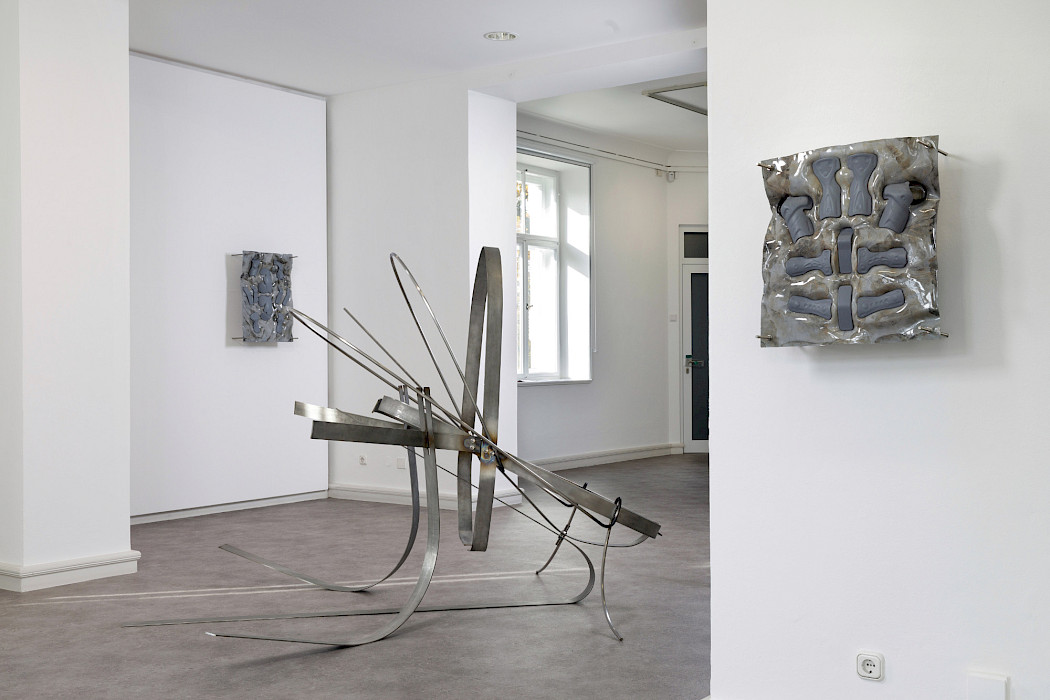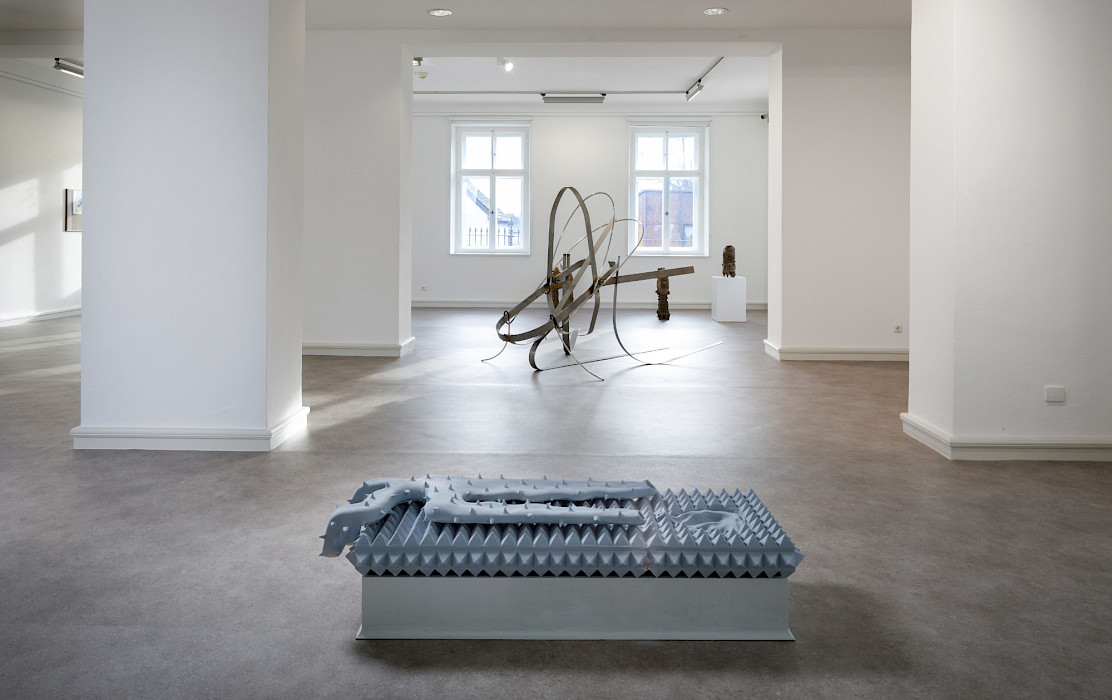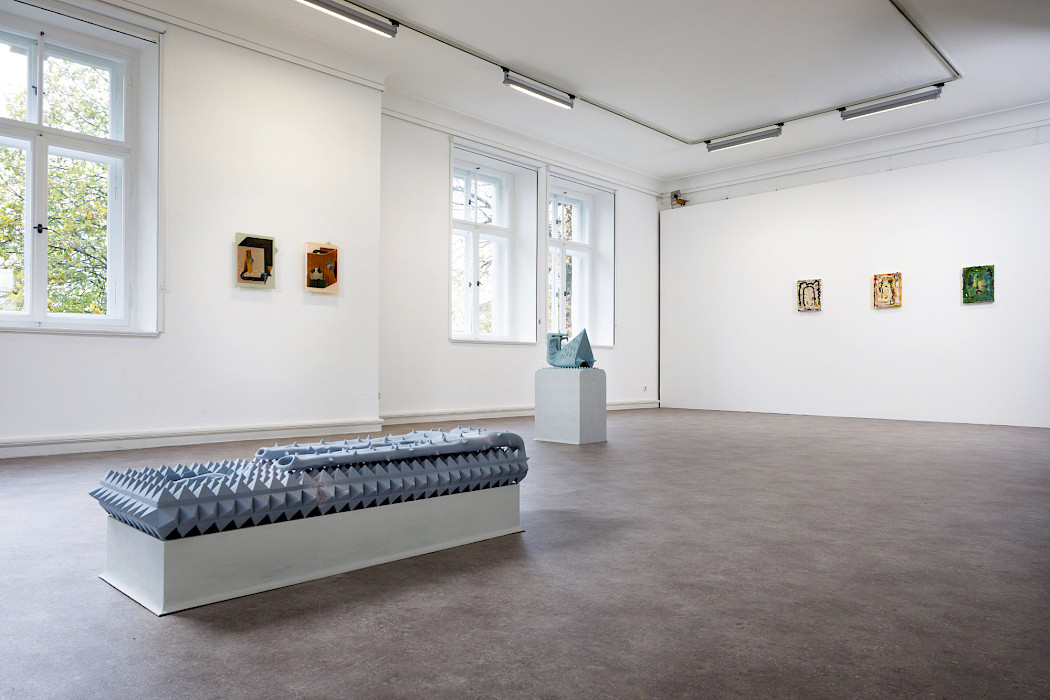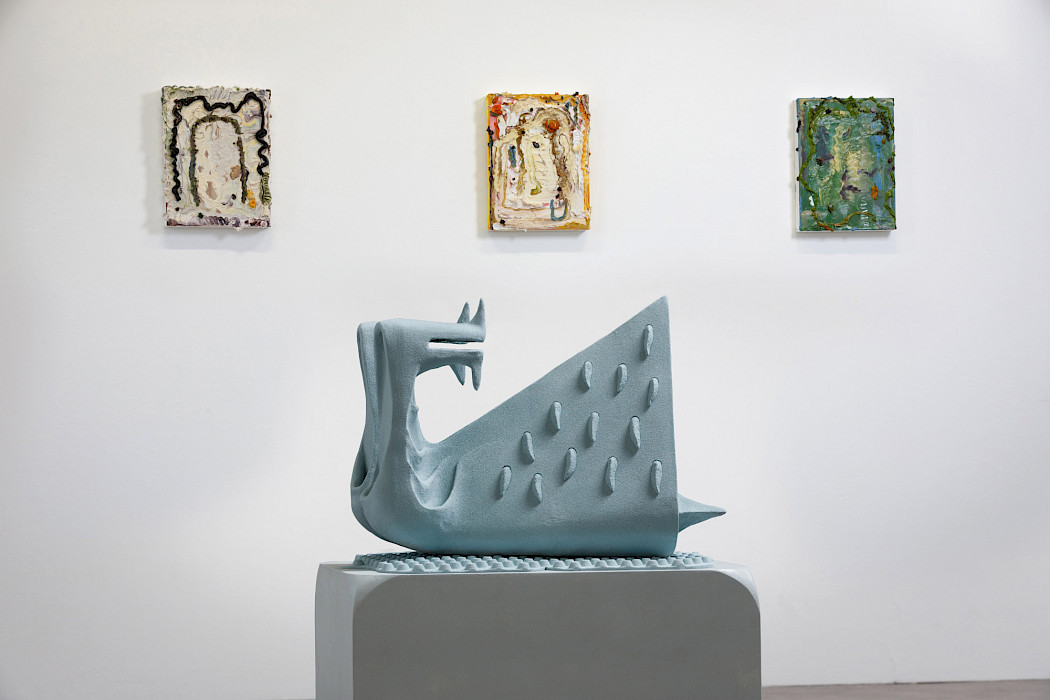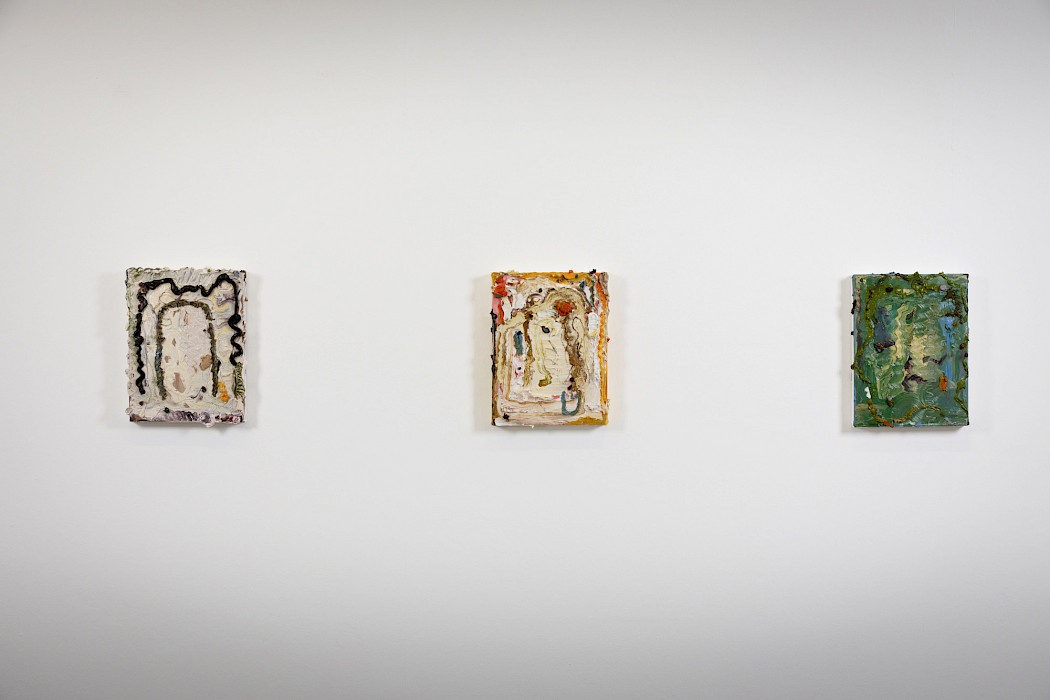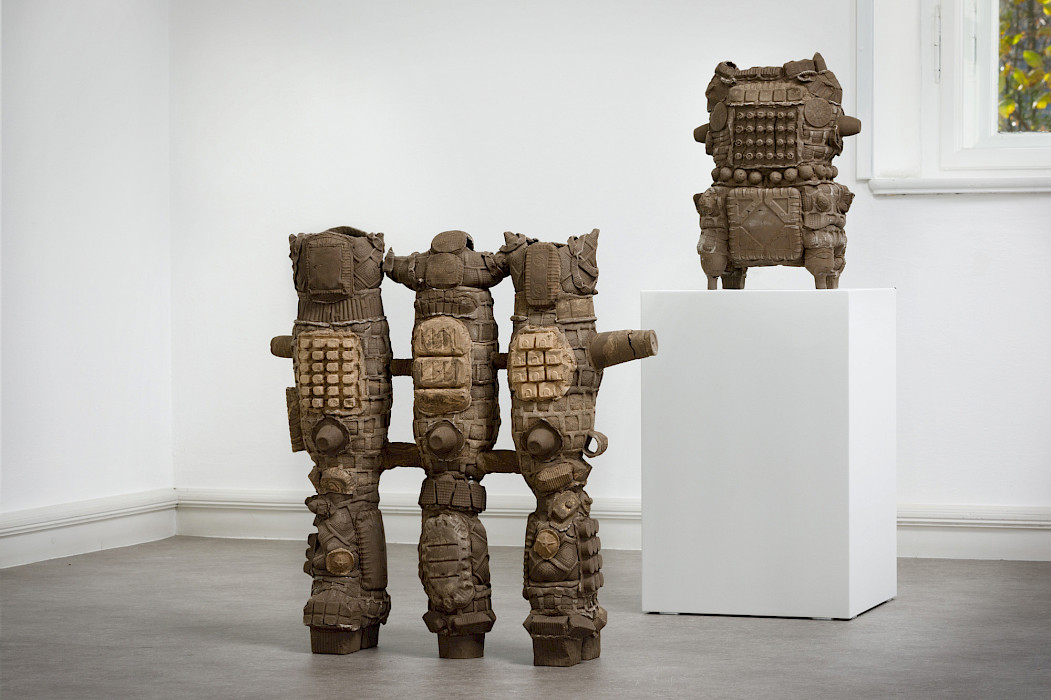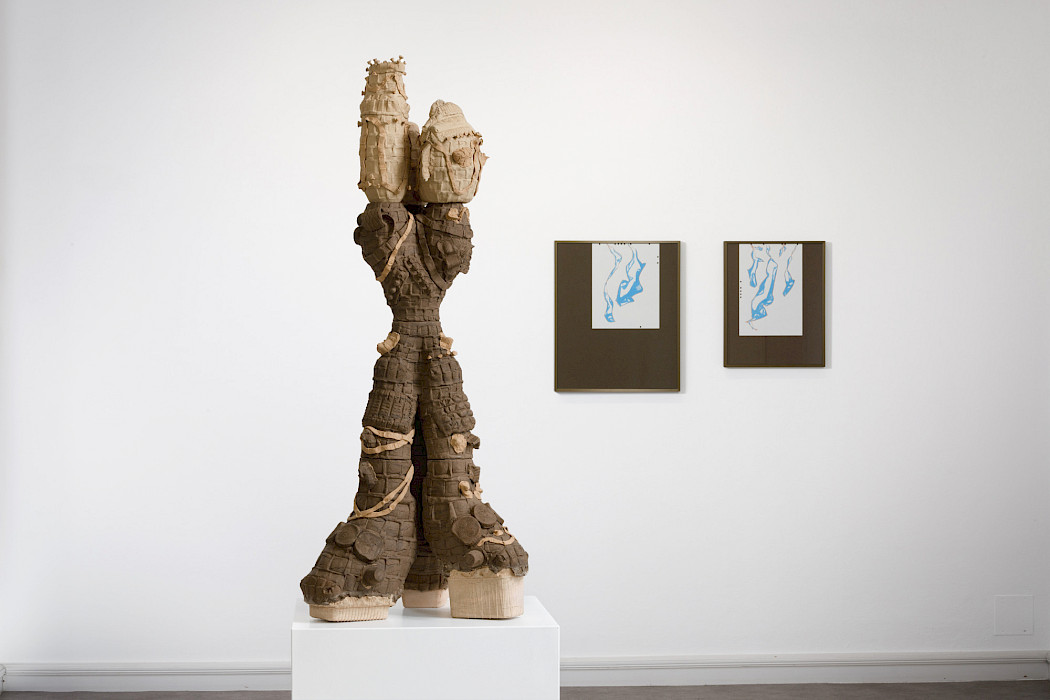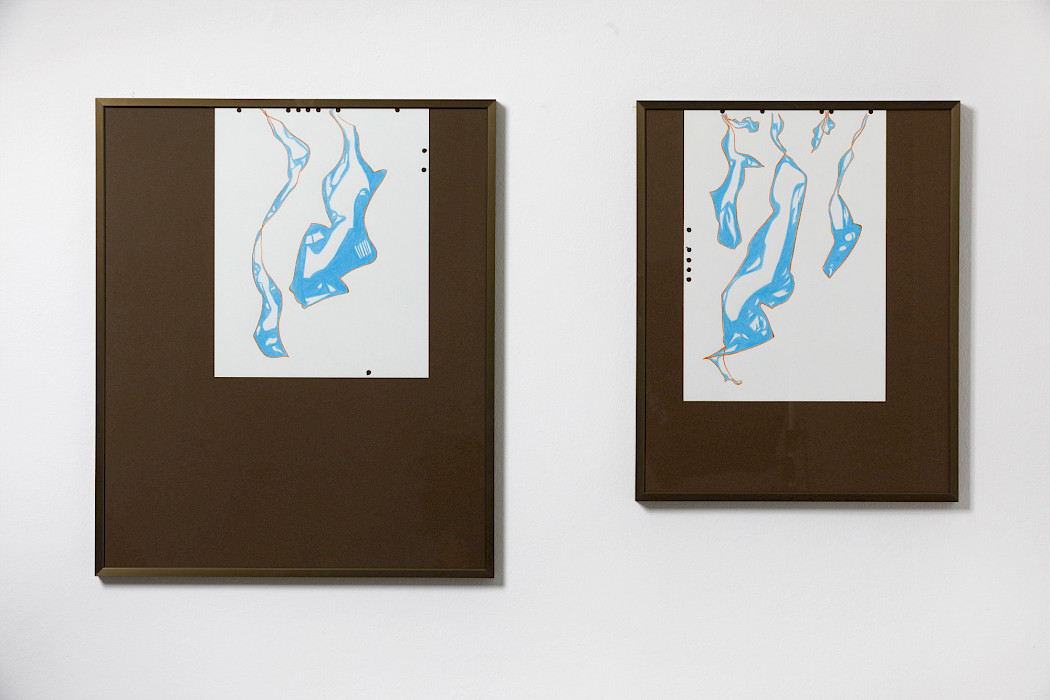Peeling
With Stefan Holzmair, Frida Kato, Anna Lena Keller, Barbara Posch and Ayaka Terajima
In this group exhibition, five young artists who studied under Nicole Wermers at the Academy of Fine Arts in Munich and have recently graduated, present their current sculptural works. The exhibition centers on the term "peeling" (exfoliation), which in dermatology refers to the removal of the superficial layers of the skin.
"Is peeling really good for the skin?" This question was the title of one of the articles in the March 2023 issue of the German Öko-Test magazine. It stated that “peeling” has many advantages, in particular, the targeted removal of dead skin particles, a very thorough cleansing, and the care of the skin as well as positive psychological effects. But basically, “peeling” could only be described as "mild self-harm for cosmetic reasons". The works shown in the exhibition deal with the ambivalence of the peeling process – the term "peeling" is actually pseudo-English, as terms such as "exfoliation", "body scrub" or "face scrub" are used in English-speaking countries – and refer to it on various levels, sometimes more intensely, sometimes more subtly.
Barbara Posch examines fundamental sculptural questions regarding the construction of volume, material cohesion, and the manipulation of a presence within a space, both in the two- and three-dimensional and in the linguistic realm. Her two works on paper in the exhibition deal with closed systems and their blank spaces. References to imaging processes – and it is only through these processes that invisible structures become visible – are juxtaposed with factual empty spaces, here: the perforated paper. For Posch, already the very act of removing a sheet of paper from a drawing pad marks the beginning of artistic work.
Ayaka Terajima's unglazed but richly decorated ceramics can be traced back to JŌmon doki (earthenware), the oldest Japanese form of pottery, but are inspired by modern plastic packaging that has emerged from the logistical philosophy of the order of time and space against the backdrop of contemporary logistics. Terajima is interested in the transformative processes of design, material, and surfaces in mass production and global distribution. For the artist, the ephemeral state of corporeality in our mechanized and digitalized society is increasingly determined by logis-tics. At the same time, however, she also focuses on prehistoric spiritual processes, in which the snake and the moon in particular – both were regarded as absolute symbols of material regenera-tion during the JŌmon period – play a central role.
Anna Lena Keller reverses the process of exfoliation: she explores how the human body is optimized through adaptive devices that are strapped to the body. Her work "Limitation Game 1" refers to an exoskeleton that consists of hydraulic or battery-powered joints. The exoskeleton has long been known as a motif in science fiction and pop culture, but it is also becoming more and more common in everyday life as an extension of the body. Keller's wall works show parts of joint support bands, which were covered with hide and – based on archaeological molding processes – fitted into negative molds. Due to the organic, raw materiality, these containers appear as if they have been "pressed" under the shiny surface and look like parts of an artificial landscape.
Stefan Holzmair creates phantasmatic pictures and sculptures. His collages, cast in opaque, mouth-blown plate glass, are made from photos taken from lifestyle magazines. Both collages and sculptures use a surreal formal language, but also draw on a digital perception of the body and the material. The subjects appear to have solidified in the course of a mechanical or organic process or a metamorphosis, perhaps due to a disruption of the digestive process, a missing enzyme, a cache filter that is too empty, or an infected bioport. The exhausted metabolism manifests material, but also metaphysical, psychic, and social digestive processes. They are creatures between living beings and apparatuses, which form networks within themselves, suggest bodily functions through enigmatic openings and amorphous supply lines and are in a state of constant change and permanent recreation. They are products of a neoliberal reality that demands constant adaptation and organic flexibility due to permanent uncertainty.
Frida Kato's combination of ceramics and pieces of scaffolding is inspired by churches and old buildings that have been covered with scaffolding for restoration and repair. Weathered layers and damage caused over time are repaired and concealed in this way. In Kato's case, it is the over-decorated architecture of Catholic churches and Baroque buildings that serve as formal references. The layering of materials is also the focus of Kato's oil paintings.
About the Artists
Stefan Holzmair (*1988 in Rosenheim, lives in Munich) studied fine art at the Academy of Fine Arts, Munich under Nicole Wermers from 2016 to 2023. In 2023, he won the Debutante Prize of the Academy of Fine Arts, Munich, as well as the Kulturpreis Bayern. His works have been shown in numerous group exhibitions.
Frida Kato (*1990 in Tokyo, lives in Munich) studied Fine Arts at Zokei University from 2010 to 2014 and Sculpture at the Academy of Fine Arts, Munich from 2017 to 2023. Her works were shown in a solo exhibition at On May Fourth in Tokyo, Japan. She has also participated in numer-ous group exhibitions.
Anna Lena Keller (*1993 in Weilheim i.OB., lives in Munich) works primarily in the fields of sculp-ture and installation. She studied sculpture at the Academy of Fine Arts in Munich and the Acca-demia di Belle Arti di Roma in Italy and graduated in February 2023. Her work has been shown in galleries such as the Produzentengalerie Hamburg, the Galerie of the City of Schwaz, and the Djerassi Sculpture Park in Woodside, California.
Barbara Posch (*1991 in Austria, lives in Munich) studied Fine Arts at the Academy of Fine Arts, Munich from 2017 to 2023 and at the University of Art and Design, Linz from 2011 to 2015. Her work has been shown at PACT Zollverein Essen, Produzentengalerie Hamburg, POSITIONS Art Fair Berlin, Karl & Faber Munich, and Kunstraum Schwaz Tirol. Posch works in the fields of sculp-ture, image, and text with both semantic and actual properties and qualities of materials.
Ayaka Terajima (*1987 in Japan, lives in Munich) graduated in 2012 with a bachelor’s degree in fine arts, and in 2014 with a master’s degree in ceramics at the Tokyo University of the Arts. In February 2023, she completed her diploma studies in sculpture under Nicole Wermers at the Academy of Fine Arts in Munich. The work "Doki on the Three Days", which was part of her diploma, was acquired by the Neue Sammlung of the Pinakothek der Moderne in Munich. She was awarded the Frechener Keramikpreis, the RheinEnergie-Preis, and the BKV-Preis of the Bayerischer Kunsthandwerksverband.
Duration of the exhibition: extended until 31.12.2023! Open until 20.12.2023 during regular opening hours. Open on 31.12.2023 exclusively for guests of the BYE BYE 2023 New Year's Eve concert!
